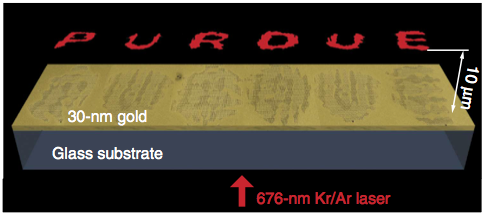Two words: plasmonics; metamaterials. These could reshape storage over the next 20 years.
What are they?
Plasmons, specifically surface plasmon waves, are generated when light interacts with a metal. The free electrons in the metal support a wave of charge density fluctuations on the metal’s surface.
If you’ve seen dichroic glass, you’ve seen plasmons in action. It is the optical plasmonic resonances induced by metal nanoparticles that produce the changing colors in the glass.
The Romans made dichroic glass almost 2,000 years ago. Here’s the best example, the Lycurgus cup, first lit with a flash and then lit from behind.

Metamaterials are artificial structured devices that operate on a scale smaller than the wavelength of an external electromagnetic or photonic source. What this means is that optical lenses can be fabricated that break the normal rules of optics, for example, a negative refractive index.
Researchers have fabricated lenses a few microns in diameter with a focal length of a few microns operating with visible light. This scale is compatible with chip manufacturing technology and could be used in on-chip optical applications.
And this relates to storage how?
Nano-holograms are one potential of plasmonic metamaterials. In the paper Metasurface holograms for visible light researchers at Purdue demonstrate
. . . holographic images generated at a wavelength of 676nm by a 30-nm thick planar metasurface hologram, consisting of an array of phase-controlling plasmonic nanoantennas.
To put that in perspective, 30-nm is about 1/23rd of the optical wavelength, where conventional holograms would require almost 700-nm thick material. And these holograms encode both phase and amplitude, making it feasible to produce extremely small, low-noise, high-resolution images.
Here is an example:
Or how about a SPASER, or surface plasmon amplification by stimulated emission of radiation, an extremely compact source of coherent light. Standard laser sizes are limited by the diffraction limit of light, so a much smaller laser would enable uses not feasible today.
The StorageMojo take
Basically, metamaterials and plasmons enable new ways of writing and reading. While I’ve stressed the optical options, plasmons can also be magnetic, perhaps making them more applicable to today’s hard drives.
Of course, this is all very far from products. But I expect to see some of this technology in mass produced storage in 15 years or less.
Courteous comments welcome, of course. Materials science and nanotechnology are just getting rolling. I want to keep watching this to see where it goes. Any storage researchers looking at this?




Recent Comments